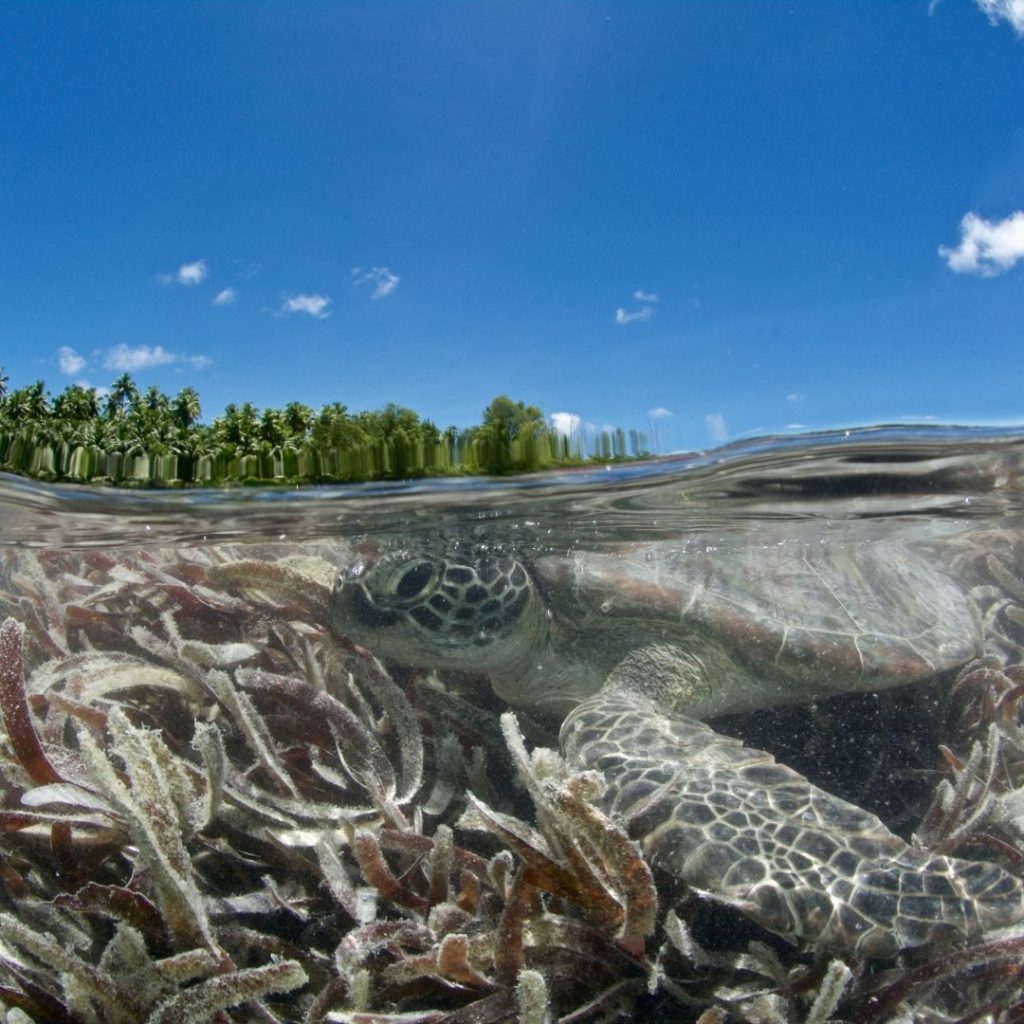
Loggerhead Marinelife Center Celebrates Seagrass Awareness Month 2021
While many Americans adorned themselves in green for St. Patrick’s Day, LMC is going green this March for Seagrass Awareness Month. Considered one of the most productive fish habitats on earth, seagrass beds are critical for ensuring ecosystems are healthy and thriving. These habitats also assist in slowing erosion and improving water quality. Unfortunately, these habitats are being threatened due to poor water quality, polluted runoff, and boat propeller damage.
What are seagrasses?
Seagrass, also known as submerged aquatic vegetation (SAV’s), are underwater flowering plants that are often confused with seaweed. The Florida Museum notes that there are over 50 species of seagrasses that can be found in shallow, coastal, temperate, and tropical waters all around the world. Their growth is limited by sunlight and water clarity, which restricts the areas in which seagrasses are able to grow. Florida Fish and Wildlife Conservation Commission (FWC) estimates that Florida has more than 2.5 million acres of seagrass beds along its coastlines and within estuaries. Seven species of seagrass can be found off the coast of Florida, but the most abundant is turtle grass (Thalassia testudinum), shoal grass (Halodule wrightii), and manatee grass (Syringodium filiforme) (FWC).
What animals use seagrasses as habitat?
Seagrass beds are often overlooked in environmental discussions, but they provide critical habitats for a variety of species and are considered nursery habitats. FLSeaGrant notes that approximately 85% of commercial fish species in Florida spend time in seagrass beds at some point in their lives. Without these nursery habitats, juvenile fish and shellfish would lack food sources and protection that are vital during this phase of their life. Species that spend time in seagrasses as juveniles include spiny lobsters, spotted sea-trout, and blue-striped grunt. Seagrass beds are not only important to juvenile animals, many other animals rely on seagrass beds for habitat and food. Some of which include queen conchs, Bahamian sea stars, parrotfish, manatees, and green sea turtles. Seagrass is an important food source, but so are the organisms that grow on it. These organisms are known as epiphytes and include smaller life forms such as sponges, barnacles, and tube worms. These juvenile creatures, epiphytes, and full-time residents make seagrasses busy and thriving ecosystems.
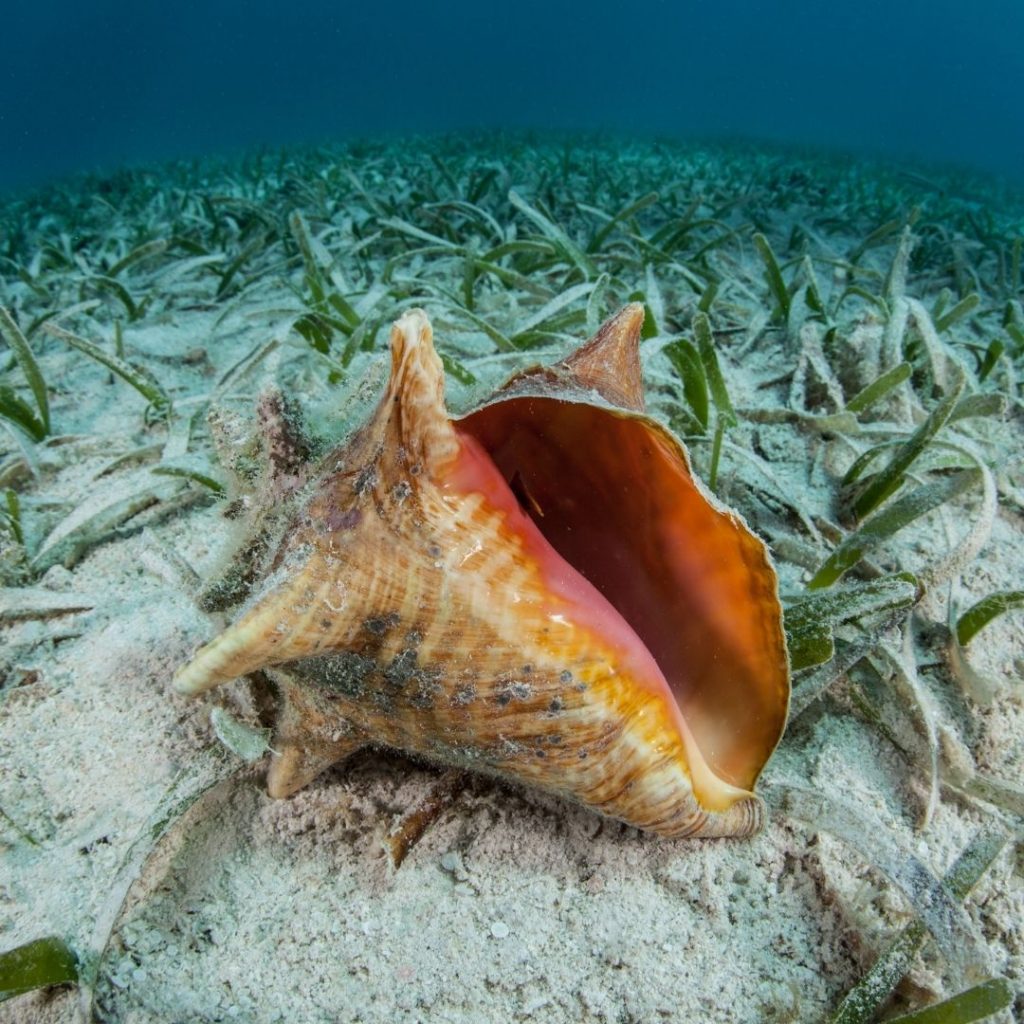

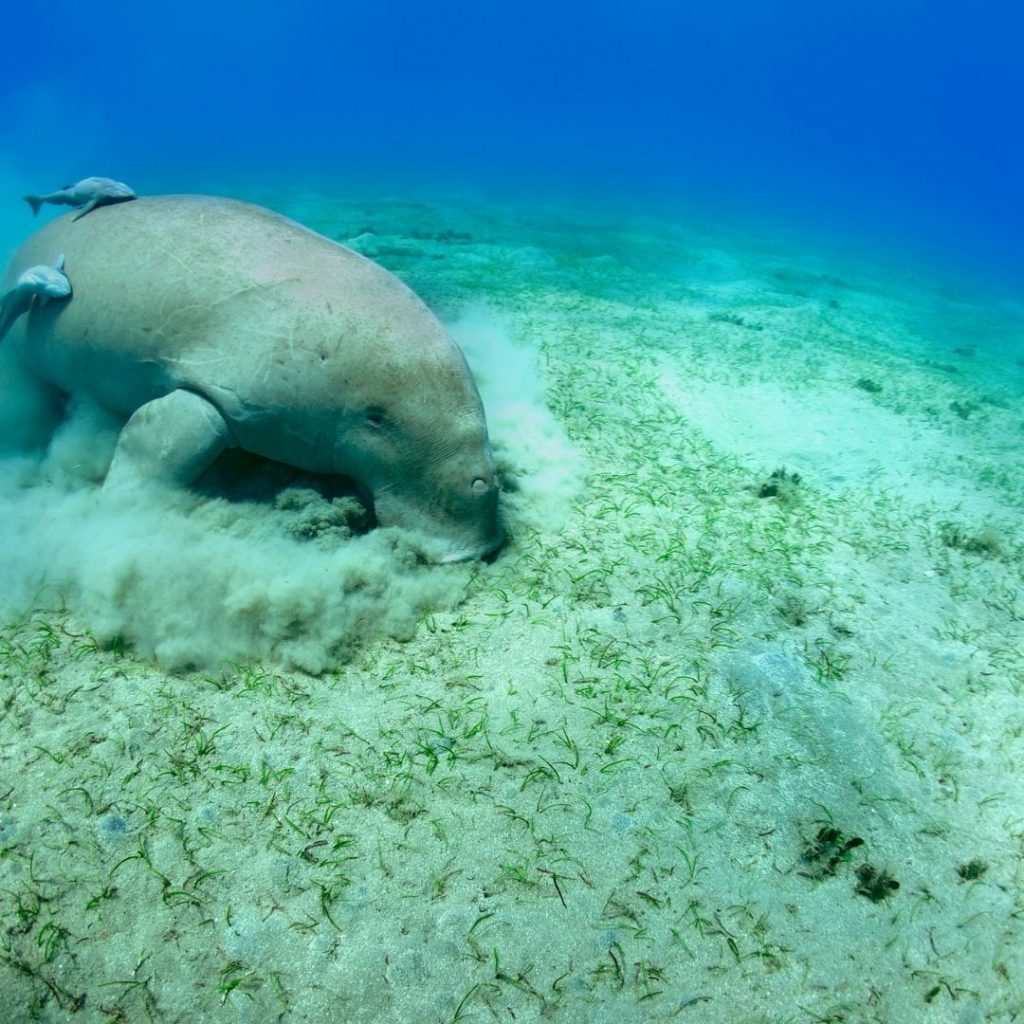
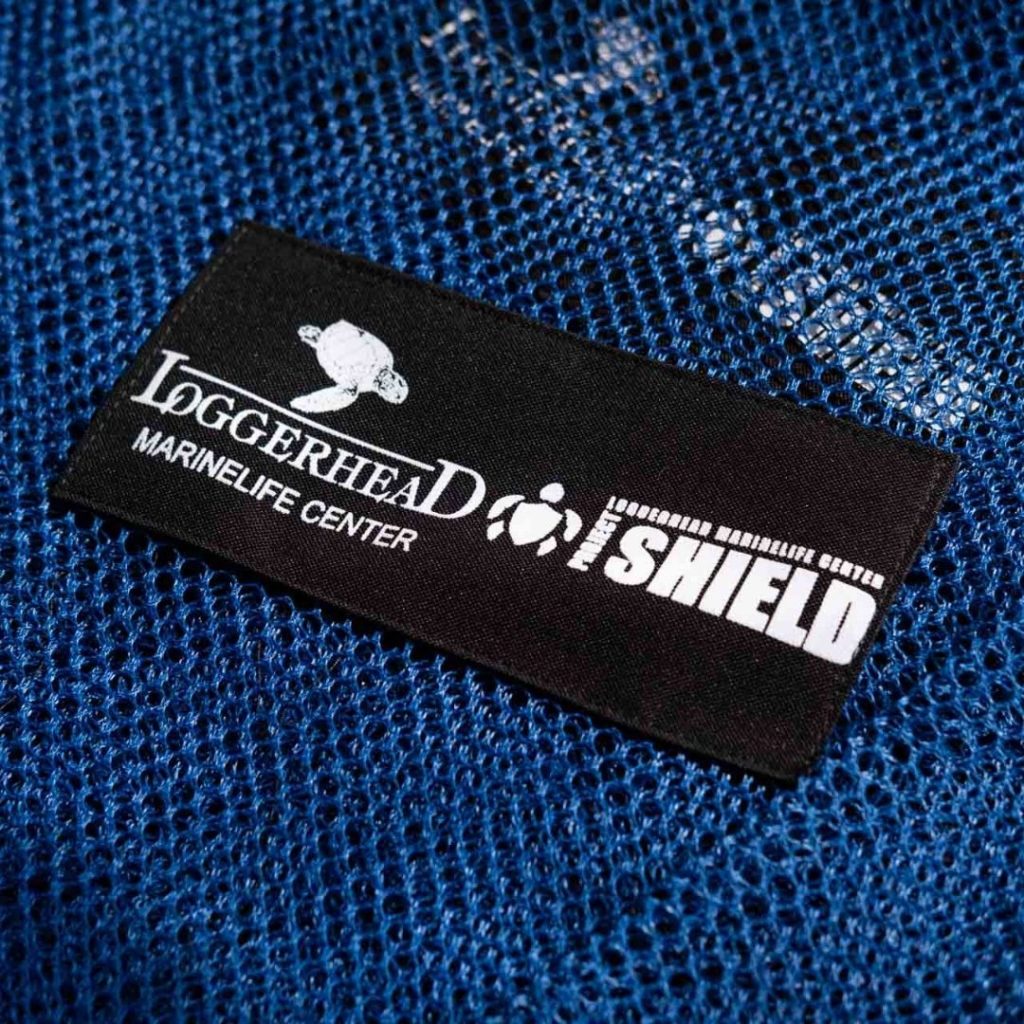
How do seagrasses help the environment?
Seagrass beds are equally essential to marine life and human life. Seagrass beds trap sediments and slow-wave energy, which assists in slowing coastal erosion. The slow of coastal erosion is key in protecting homes, businesses, and beaches during hurricane season. Seagrasses have rhizomes, or underground stems, which create an underground system that helps stabilize the seafloor and trap sediments. Overall, this helps slow coastal erosion and protect coastlines from hurricanes and tropical storms.
Another reason seagrass beds are important to humans is that they improve water quality and clarity. Runoff from the land often contains sediments and a variety of dissolved nutrients. Seagrasses remove these nutrients before they cause problems in the ecosystem. Seagrasses also trap fine sediments, which helps prevent coastal erosion and also decreases the number of suspended particles in the water, also known as turbidity. Without seagrass to stabilize the seafloor and trap nutrients, recreational areas would be cloudy and less ideal for activities like snorkeling.
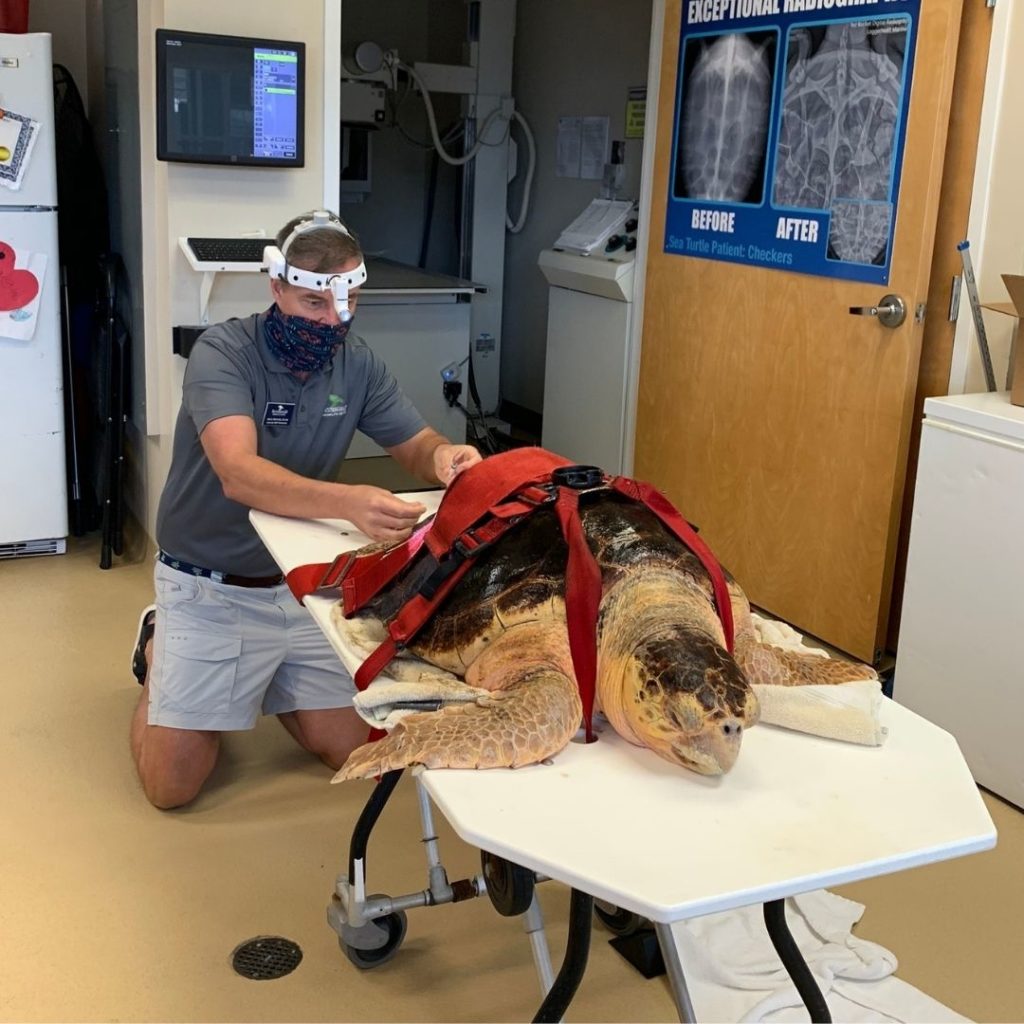
What threats do seagrasses face?
Unfortunately, these important ecosystems are facing various threats that have the potential to affect marine life and humans in their own rights. The two main threats harming seagrass ecosystems are stormwater runoff and scarring by boat propellers.
Stormwater runoff is rainfall that flows over bare ground surfaces and into our local waterways. This increases the number of nutrients flowing into our local aquatic habitats, including those surrounding seagrass beds, leading to eutrophication – or the process in which a water body is increasingly enriched with nutrients. This process can lead to a lack of oxygen in the water, inhibiting seagrass growth. FWC proclaims that stormwater runoff also contains particles and sediments that increase water turbidity, or clarity, which can block out sunlight and limit seagrass growth. Increased water turbidity also makes these areas less appealing for human recreation.
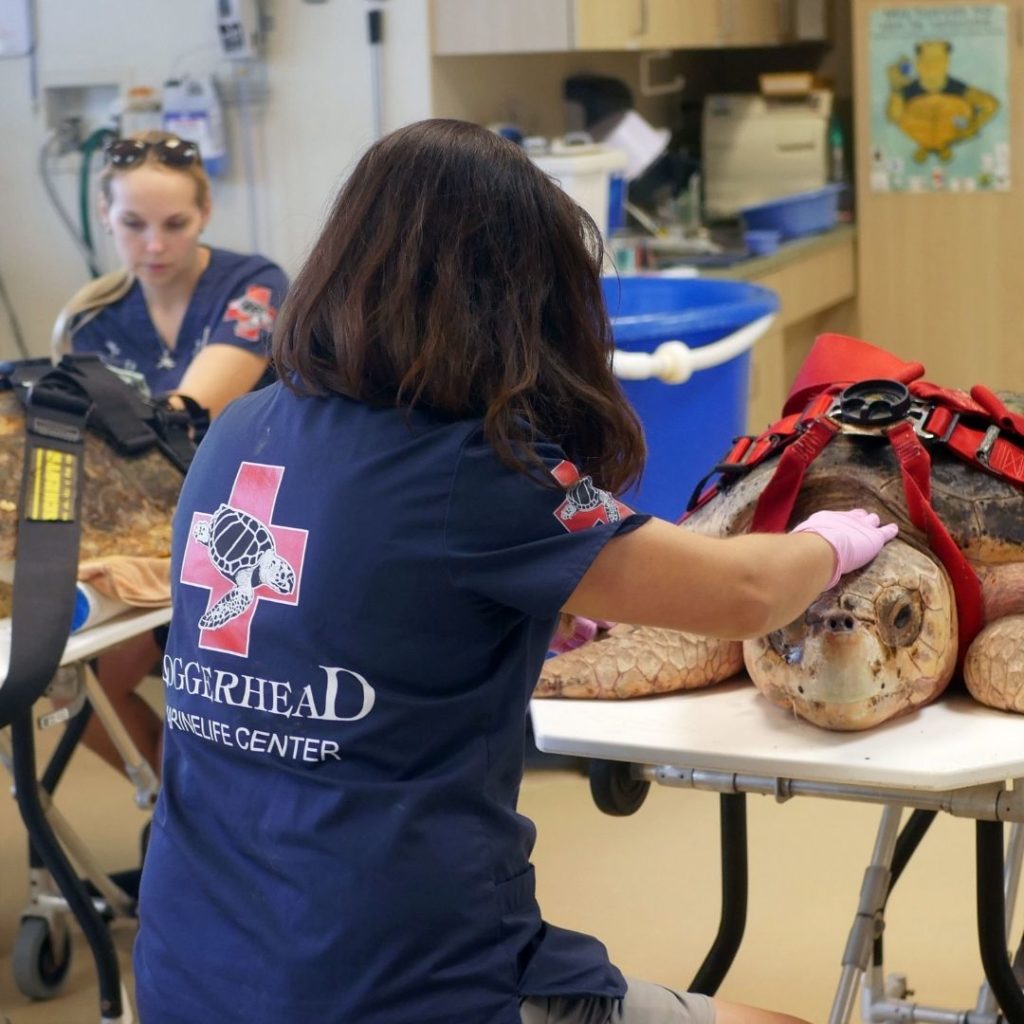
Propeller scars occur when boats come into shallow waters and the propeller damages the seagrass beds. The scarring has impacted over 30,000 acres of seagrass beds in the state of Florida. Recovering from damage to seagrass beds can take many years. Between 10% and 20% of the seagrasses in the Florida Keys have been lost due to propeller scars (Florida Museum).
Seagrass Awareness Month 2021
The importance of seagrass beds has led to conservation efforts on a local and federal level. Efforts to increase education, improve water quality, and implement boater restrictions have been put in place in order to protect seagrass beds. The state of Florida has enacted legislation to protect these vital ecosystems. Groups such as the Florida Fish and Wildlife Seagrass Integrated Mapping and Monitoring Program are mapping, monitoring, and using data sharing to make information more accessible to stakeholders of the current status of seagrasses in the state. Along with experts, LMC encourages citizens to help protect, monitor, and conserve ecosystems. The public can help professionals improve water quality by using natural and environmentally friendly at-home and personal care products. Additionally, supporters are advised to follow regulations and guidelines and participate in citizen science projects like LMC’s Water Quality Monitoring program.
———————–
Education. LMC’s Education programs aim to empower and inspire individuals to engage in the conservation of the world’s ocean by providing STEM-based knowledge and resources to take responsible action. For in-field, in-classroom, and virtual education experiences, please email Guest Services at [email protected].
———————–
One World. At Loggerhead Marinelife Center (LMC) we strive to be industry leaders in sea turtle and ocean conservation. Our work is focused on four core pillars, each focused on demonstrating measurable impact. Our team researches and rehabilitates sea turtles because sea turtles tell us the health of the ocean, which tells us the health of our planet. These critical indicator species serve as our global ambassadors for ocean conservation. In this blog, we invite you to dive into the depths of ocean conservation and explore our research efforts.
Our educator biologists aim to empower and inspire individuals to engage in the conservation of the world’s oceans and ecosystems by providing STEM-based knowledge and resources to take responsible action. Donate to propel our mission and help save sea turtles.
